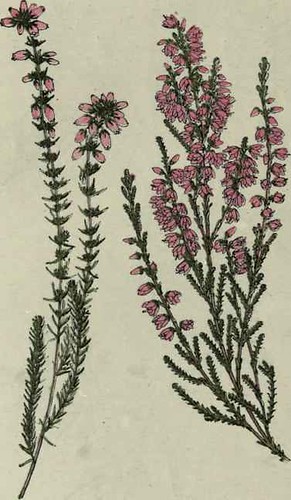I went walking through the woods like I do on a snowy day. The wind was blasting me, even through the wool hat my lady knit for me with the words "hold on to your hat" knit beneath the fold-up brim in forest green. But when I got over the first ridge of dunes into the hollows between, sheltered from the wind, it was downright pleasant. Calm. Though the leafless trees above waved and swayed and reported a turbulent world above, down below I was sheltered in still air, and I walked through the snowy woods like I do.
I saw a cluster of new, sapling beech trees in an area where several larger trees had fallen. A massive beech, several small oaks and a large pine. something fell over and like dominoes took the lot of other trees with it.
Yet, here, by the decaying, moss covered fallen trees were hundreds of tiny two foot tall beech saplings.
I stood by the saplings for a long while, watching them. Looking around. No other area in the woods nearby had such a large population and cluster of saplings. Why here? In this one area. In such a dense cluster while the rest of the woods are filled with tall branchless beeches winding up in smooth gray trunks until the canopy 30 feet above?
I stood in the warm winter snow pondering the patch of tiny beech trees.
Then looked up.
The massive fallen trees had formed a clearing in the canopy above.
The fallen growth of the massive trees, you see, had allowed new growth to set in.
Throughout the woods the older trees reach into the sky and grab the sunlight, and little lives below but the general ground-cover and ferns. And where the sunlight is blocked, the woods are uniform in flora, and size of tree.
Where diversity in size forms is around fallen trees. When the giants of the woods have fallen, suddenly the standard life changes. A hole in the canopy lets light in, moss forms on the fallen trees, lichen, ferns and shelf fungus of brown and bright orange feast on the rotting wood and the sunlight feeds a space that had been starved for decades.
As I walked on, I found a similarly shaped patch of small green plants surrounded by snow, with an pile of fallen trees across the foot path. The new ground-cover as predicted corresponded to a set of fallen trees and an exposed canopy.
I picked a sprig of the strange plant and brought it home, and spend the evening trying to classify it, but didn't get very far.
I left the plant on the table, and the next day my wife found it
"What's this?"
"I don't know. I found it. I tried to find out what it was, but no luck."
She pulled the Audubon Society field guides and the American Horticultural Society "Plants for every Season" from the shelves and set to work.
We ate tomato soup together, the family, and grilled cheese sandwiches, leafing through Autumn flowering plants. And as I bit into my grilled cheese she said "calluna vulgaris. It's heather. Fine leaved heather."

No comments:
Post a Comment